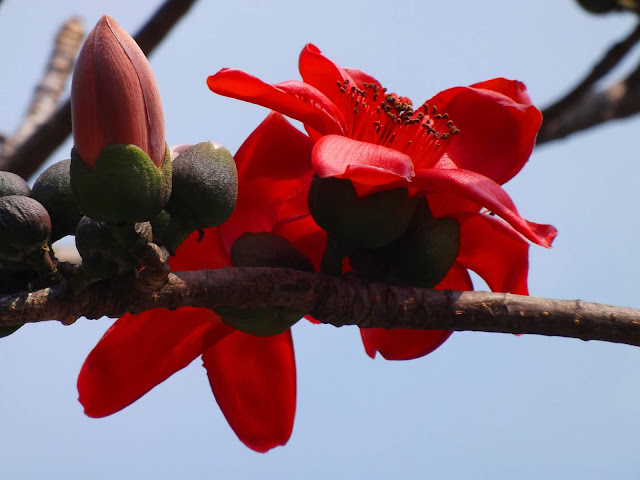Bon akra or Burbush (Triumfetta rhomboidea, family: Tiliaceae) is an annual or perennial undershrub with woody stem and few branches, attaining a height of 1-1.5 m. Bark is smooth and brownish. Young shoots are reddish and covered with soft hairs. It is found beside roads, fallow lands and slopes of hill. Its origin is probably tropical America. It is now well-adapted to tropical Africa and Asia. However it has been identified as an invasive plant all over the world.
Common names: Bon okra (Bang); Chinese bur, Burweed (Eng).
Leaves are variable, ovate-lanceolate or 3-lobed, 3-10 cm long. 3-7 veins, acute at end, base rounded, irregularly dented, petiole long, alternate.

Flowers are in terminal inflorescence, 3-4, yellow. Petals 5, sepals 5.
Fruit is bristly capsule, rounded or ovoid, dark brown, tiny, covered with thorn-like hairs, dehiscent. Its dried fruits get stuck in the body of human or cattle due to this kind of hairs. Its Bangla name 'Bon akra' is probably derived by this type of characteristic. Its flowering and fruiting occur in Oct-Jan. The plant is propagated by seeds and cuttings.
A kind of fibre is obtained from its stem. Its bark and leaves are used in diarrhoea. A decoction is made from its flowers (mixed with sugar and water) which is used in the treatment of gonorrhoea. Its roots are used to increase urine. Leaves and bark are used in dysentery.

Synonyms: Bartramia angulata, Bartramia crispifolia, Bartramia glandulosa, Bartramia indica, Bartramia lappago, Bartramia rhombifolia, Triumfetta angulata, Triumfetta glandulosa, Triumfetta indica, Triumfetta mauritiana, Triumfetta mollis, Triumfetta riparia, Triumfetta trilocularis, Triumfetta vahlii, Triumfetta velutina.






This comment has been removed by the author.
ReplyDeleteThis comment has been removed by the author.
ReplyDeleteyurtdışı kargo
ReplyDeleteresimli magnet
instagram takipçi satın al
yurtdışı kargo
sms onay
dijital kartvizit
dijital kartvizit
https://nobetci-eczane.org/
K2N
salt likit
ReplyDeletesalt likit
dr mood likit
big boss likit
dl likit
dark likit
OV8E